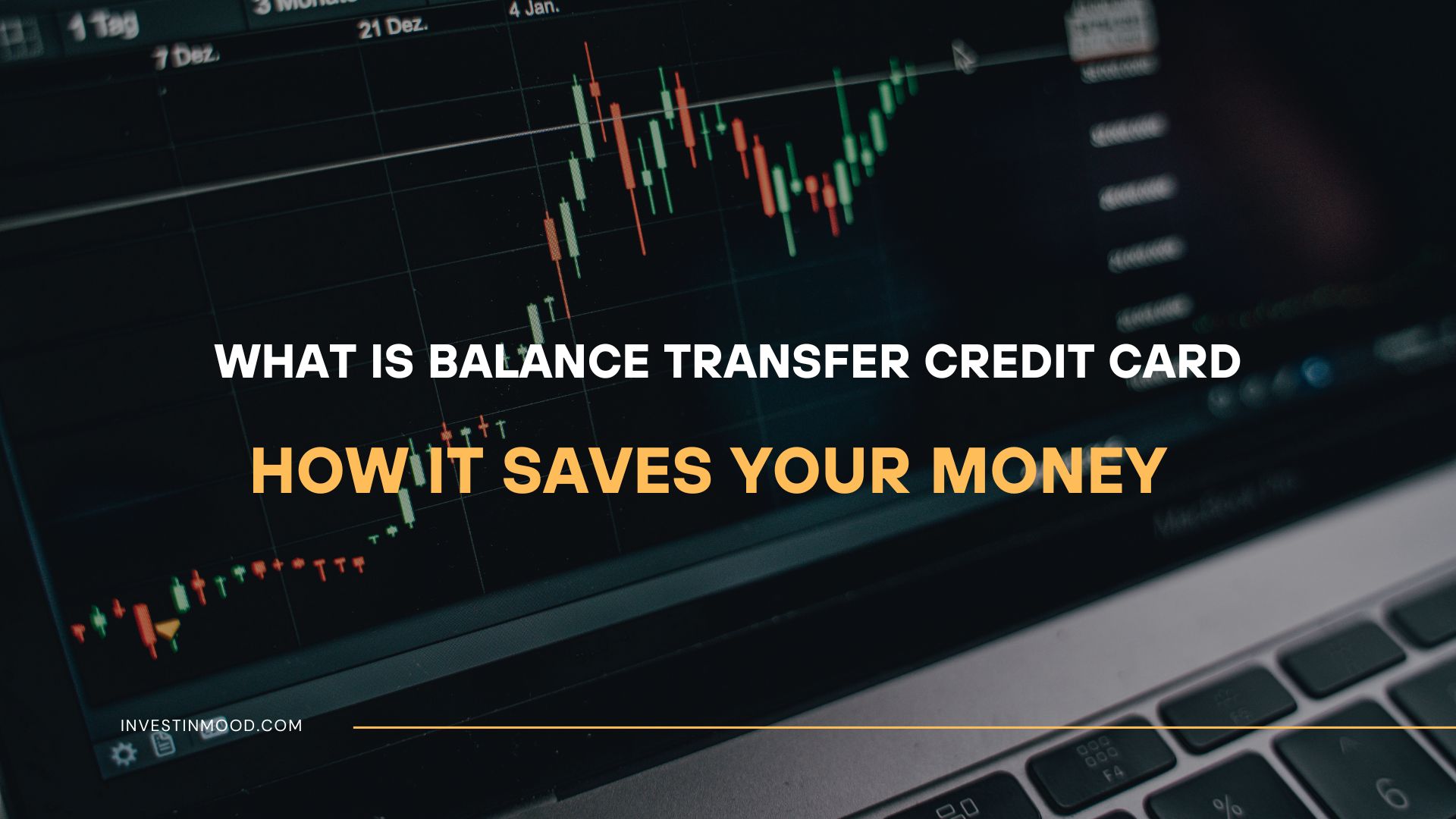
What Is Balance Transfer Credit Card and How It Saves Money
A balance transfer credit card is a powerful financial tool designed to help you save money and pay off high-interest debt faster. It allows you to move existing credit card balances to a new card with a low or 0% introductory Annual Percentage Rate (APR). For consumers in the US, UK, Canada, and Australia grappling with credit card debt, this strategy can be a game-changer for achieving financial freedom.
Summary Table
| Aspect | Detail |
|---|---|
| Definition | A credit card that lets you transfer debt from other cards, typically offering a low or 0% introductory interest rate for a set period. |
| Also Known As | BT Card, 0% APR Card |
| Main Used In | Personal Finance, Debt Consolidation, Credit Management |
| Key Takeaway | It’s a strategic tool to reduce interest costs and pay down principal debt faster, but requires discipline to avoid fees and future debt. |
| Related Concepts |
What is a Balance Transfer Credit Card
A balance transfer credit card is a specific type of credit card that allows you to move your outstanding debt from one or more existing credit cards to this new card. The primary allure is the promotional period, which typically offers a 0% or very low Annual Percentage Rate (APR) on the transferred balance for a set duration, often ranging from 12 to 21 months.
Think of it as refinancing your credit card debt. You’re essentially taking a high-interest loan (your old credit card debt) and moving it to a new lender who offers a much lower, temporary interest rate. This creates a window of opportunity where your payments go almost entirely toward reducing the principal debt amount, rather than being eaten up by interest charges.
The Core Concept Explained
The core concept hinges on the difference between your current high APR and the new card’s low promotional APR. For example, if you have a $5,000 balance on a card with a 20% APR, you’d pay about $1,000 in interest per year just to maintain the balance. By transferring it to a 0% APR card for 18 months, you save that $1,000, allowing you to pay down the $5,000 principal much faster.
It’s crucial to understand the mechanics:
- What it measures/saves: It directly reduces your interest expense.
- What a successful outcome indicates: You have successfully used a period of low-cost borrowing to eliminate debt more efficiently.
- What a failed outcome indicates: If you don’t pay off the balance during the promo period or you accumulate new debt, you could end up in a worse financial position.
Key Takeaways
How a Balance Transfer Works: A Step-by-Step Guide
While there’s no formula to calculate, there is a clear process. Understanding this workflow is key to a successful balance transfer.
The Step-by-Step Process
- Check Your Credit Score: Your approval and the terms you receive depend heavily on your credit score. Aim for a score of 670 or higher for the best 0% APR offers. You can check your score for free through services like Credit Karma or your current credit card provider.
- Find and Apply for a Card: Research and compare balance transfer credit cards. Look for the longest 0% APR period and the lowest balance transfer fee. For example, a card offering 0% for 18 months with a 3% fee is generally better than one offering 0% for 12 months with a 0% fee for larger debts.
- Initiate the Transfer: Once approved, you can initiate the transfer. You’ll need to provide the account numbers and amounts for the debts you want to transfer. You can usually do this online or by phone. The new card issuer will typically handle the process of paying off your old cards.
- Confirm the Transfer and Pay Attention to Details: Ensure the transfers are completed correctly. Note the end date of the promotional period and the standard APR that will apply to any remaining balance after that date.
- Make Payments on the New Card: Start making monthly payments on your new card. To maximize savings, calculate the monthly payment needed to pay off the entire balance before the promo period ends.
Example Scenario:
- Input Values: You have a $5,000 balance on Card A with a 22% APR. You transfer it to Card B with a 0% intro APR for 18 months and a 3% balance transfer fee.
- Calculation: Transfer Fee = $5,000 * 0.03 = $150. Your new total balance on Card B is $5,150.
- Interpretation: To pay off $5,150 in 18 months, you need to pay about $286 per month. If you only made minimum payments and didn’t pay it off, the remaining balance would then be subject to Card B’s standard APR, which could be 18-25%.
For someone in the US, this process is facilitated by major issuers like Chase, Citi, and Bank of America. In the UK, providers like Barclays and MBNA are key players. Always ensure you’re applying for cards available in your country.
Why a Balance Transfer Credit Card Matters for Your Finances
A balance transfer card isn’t just another credit product; it’s a strategic lever for personal debt management.
- For the Debt-Laden Individual: It provides a clear, structured path out of debt. By slashing interest charges, it turns a seemingly insurmountable debt into a manageable payoff plan. This can reduce financial stress and provide a psychological boost.
- For the Financially Savvy: It’s a tool for optimizing financial health. The money saved on interest can be redirected to savings, investments, or other financial goals. It effectively uses the bank’s money for free for a period, improving your cash flow.
- For Your Credit Score: When used correctly, it can improve your credit score. By consolidating multiple card balances into one, you lower your credit utilization ratio on the old cards, which is a major factor in your score. However, the hard inquiry from the application and the new account will have a minor, temporary negative impact.
How to Use a Balance Transfer in Your Debt-Free Strategy
Use Case 1: The Debt Avalanche Accelerator
You have multiple high-interest debts. You transfer all balances to a single 0% APR card. This allows you to focus all your efforts on one payment. Calculate a fixed monthly payment that will clear the debt before the promo period ends. This is the most common and effective use case.
Use Case 2: Strategic Large Purchase Financing
You need to make a necessary large purchase (e.g., a new appliance or medical procedure) but don’t have the cash upfront. Using a new 0% purchase AND balance transfer card allows you to make the purchase and pay it off over time without interest, as long as it’s paid within the promo period. This is risky and should only be done with a solid repayment plan.
Use Case 3: Stopping the Bleeding on a Single High-Interest Card
You have one card with a particularly punishing APR. A balance transfer can immediately stop the accumulation of high interest, giving you breathing room to pay down the principal.
To execute this strategy, you need the right card. Comparing offers is crucial. Check out our curated list of the Best Balance Transfer Credit Cards of 2025 to find an offer that matches your financial situation and start your journey to becoming debt-free.
- Interest Savings The most significant advantage. You can save hundreds or even thousands of dollars.
- Faster Debt Payoff With interest out of the way, more of your payment goes toward the principal.
- Simplified Finances Managing one monthly payment is far easier than juggling multiple debts.
- Credit Score Boost Lowering your credit utilization can positively impact your score over time.
- Balance Transfer Fees A one-time fee (3-5%) adds to your total debt.
- Temptation to Spend Freeing up old credit lines can tempt you into new debt.
- High Post-Promo APR Any remaining balance after the intro period faces a high standard APR.
- Credit Score Impact The application and new account can temporarily lower your score.
The Psychological Trap: How to Avoid Racking Up More Debt
This is the single biggest reason balance transfers fail. You transfer $5,000, freeing up $5,000 of credit on your old card. The psychological temptation to see that as “new money” is powerful.
- The Strategy:
- Do Not Close Your Old Cards (Immediately): As discussed, closing can hurt your credit score.
- “Freeze” Your Cards: Literally put them in a block of ice in your freezer or store them in a safe deposit box. The physical barrier to using them reduces impulse spending.
- Remove Them from Digital Wallets: Delete the card information from Amazon, PayPal, and all other saved payment methods.
- Shift Your Mindset: The freed-up credit is a safety net, not a spending opportunity. It’s for absolute emergencies only.
Balance Transfer in the Real World: A Case Study
Meet Sarah, a US Consumer:
Sarah had $8,000 in credit card debt spread across two cards:
- Card 1: $5,000 at 24% APR
- Card 2: $3,000 at 22% APR
Her minimum payments were around $200 per month, but over $150 of that was going toward interest, making it feel impossible to make progress.
The Balance Transfer Solution:
Sarah was approved for a balance transfer credit card with a 0% introductory APR for 18 months and a 3% balance transfer fee.
- Transfer Amount: $8,000
- Transfer Fee: $8,000 * 0.03 = $240
- New Total Balance: $8,240
The Outcome:
Sarah set up a monthly payment of $458 ($8,240 / 18 months). For 18 months, every single $458 payment went entirely toward paying down the $8,240 principal. She paid $0 in interest during this period. She became debt-free in exactly 18 months.
Without the balance transfer, if she had continued making $458 payments on her old cards, she would have paid over $1,800 in interest and taken much longer to pay off the debt.
Beyond Credit Cards: Alternative Debt Solutions
A balance transfer isn’t the only path. It’s crucial for readers to know their options.
- Debt Consolidation Loan: As compared earlier, this is a fixed-rate installment loan. Better for those who need a longer, predictable payment schedule.
- Credit Counseling & Debt Management Plans (DMPs): Non-profit agencies like the National Foundation for Credit Counseling (NFCC) can negotiate with creditors on your behalf to lower interest rates and combine payments into one monthly sum. This can be a good option if your credit isn’t good enough for a balance transfer.
- Debt Settlement: A risky strategy where a company negotiates to let you pay back less than you owe. This severely damages your credit and can lead to lawsuits. Generally not recommended.
- Personal Loan: Similar to a debt consolidation loan, often from online lenders. Can be faster but may have higher rates for those with average credit.
Conclusion
Ultimately, a balance transfer credit card is a powerful, double-edged sword in the world of personal finance. It provides a proven method to slash interest costs and accelerate your journey out of debt, as we saw with Sarah’s case study. However, its benefits are entirely contingent on your financial discipline. The potential pitfalls—like transfer fees and high post-promo APRs—mean it’s not a magic bullet, but a strategic tool that must be used with a clear plan. By carefully selecting the right card, calculating your payoff plan, and resisting the temptation to accumulate new debt, you can leverage a balance transfer to take control of your finances and achieve meaningful debt reduction. Start by checking your credit score and comparing the latest offers to see if this strategy is right for you.
Ready to find the perfect card to launch your debt-free plan? We’ve done the research for you. Explore our up-to-date guide to the Best Balance Transfer Credit Cards Available Today to compare intro periods, fees, and find your ideal fit.
How a Balance Transfer Relates to Other Concepts
| Feature | Balance Transfer Credit Card | Debt Consolidation Loan |
|---|---|---|
| What it is | A credit card with a promotional low/0% APR for transferred debts. | A fixed-term installment loan used to pay off multiple debts. |
| Interest Rate | Low/0% introductory rate, then a variable APR. | Fixed interest rate for the life of the loan. |
| Fees | Typically a one-time balance transfer fee (3-5%). | May include origination fees (1-8%). |
| Best For | Those with good credit who can pay off debt in a short timeframe (12-21 months). | Those who prefer a fixed payment schedule and a longer repayment period (2-7 years). |
Related Terms
- Annual Percentage Rate (APR): The annual cost of borrowing, including fees. Understanding the difference between intro and standard APR is critical.
- Credit Utilization Ratio: The percentage of your available credit you’re using. A balance transfer directly lowers this ratio, potentially boosting your score.
- Debt Snowball/Avalanche: Popular debt repayment methods. A balance transfer supercharges the Debt Avalanche method by removing interest from the equation.
Frequently Asked Questions
Recommended Resources
- The Consumer Financial Protection Bureau (CFPB) provides unbiased, government-vetted information on balance transfers.
- Investopedia’s Balance Transfer Guide offers a deep dive into the mechanics and terminology.
- How to Choose the Best Balance Transfer Credit Card for Your Needs





